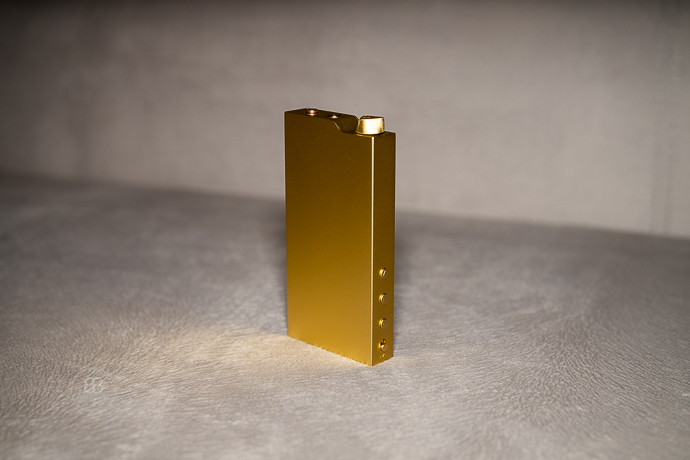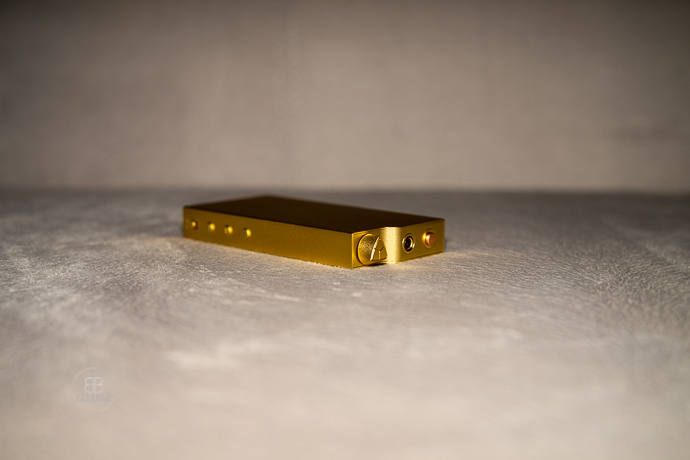Today we share the full review of the $549 USD Dethonray Pegasus SG1 SE portable and wireless DAC/Amplifier.
Disclaimer: The Dethonray Pegasus SG1 Special Edition was arranged for us directly by Dethonray.
About Dethonray
Dethonray currently is a very boutique brand and the DTR1 Audio Player was their first child as a complete end-user product. And came the DTR1+ model, which I reviewed at the start of 2022. It deserved an award from us to be one of the best DAPs available, especially for its price. You can check that review just below and I suggest not missing it.
Anson Tse is the man behind Dethonray, and he has huge experience in audio processing. He believes that the universal designs in the market are not good for high fidelity, so he came up with his own. The same goes for his amplifier designs and I hope he continues to do the same.

The “DethonRay” name is actually coming from a violin record Anson had listened to. The bass violin -to him- was very nice in the recording, and the recording itself was named “Dethon”, so he thought about using the name. After some time he decided to add the “Ray” part to the end.
Giving life to your music collection is the one and only objective for every Dethonray product.
Pegasus SG1 SE (Gold)
The Dethonray Pegasus SG1 SE is a wireless DAC/headphone amplifier. Or as Dethonray calls it, a ”Wireless HiFi Player”. It is designed for portable use but it’s suitable for desktop use as well for laptops and PCs. However, there’s no USB connection.
We have already reviewed the standard Pegasus SG1 as below:
This gold version is the upgraded model. It is a limited version where the 3.5mm out is removed, and only 4.4mm works. The LPF circuit is overhauled with this model, and you basically have more power from the 4.4mm output. The driving power is increased, so you can drive full-size headphones more efficiently.
You lose the 3.5mm out but you gain more juice and better sound quality. Also, I believe the 4.4mm is now fully balanced, rather than the 4.4 in the standard model, where it was just there for convenience reasons.

The SG1 utilizes the ES9038Q2M DAC chip, an “Advanced Desktop Plus Power Unit” which is developed in-house. It’s an advanced power system designed for high-fidelity sound performance with independent suppliers of digital and analogue circuits. Similar to high-end DAP and AMP systems, but with a minimal path and hard-soldered joints for best performance with no compromises.
The new device has a particular gold colour, matching the new volume knob. The chassis is from CNC-milled high-quality aluminium. The 3.5mm out is covered with a gold dust protector cap.
The SG1 supports SBC, AAC, APT-X, APTX-L, APTX-LL, APTX-HD, and LDAC codecs.

Design & Build Quality
The Pegasus SG1, just like the previous offerings from Dethonray, has a practical approach to its design. However, the SG1 is a more polished and complete product, and you feel that especially when you first put it in your hands.
The build quality is similar to the Honey H1 USB DAC/Amp, but the design and finish are certainly improved. The volume knob is the main characteristic of the design language, with its unique shape and triangle design. The Honey H1’s volume knob faced criticisms and rightfully so since it was very small and heavy. It was quite difficult to rotate it. This time there’s a much better knob and it’s much more ergonomic.
The front panel has 3.5mm (non-functional) and 4.4mm outputs and a volume knob. On the opposite side, you have a status light and a USB Type C port. On the top of the device, you have another light which is actually a Dethonray marking and a logo. This light tells you about the Bluetooth status and whether the device is on or off. On the side, you have play/pause and track skip/backward buttons, together with a High/Low Gain switch.

User Experience
The Honey H1 DAC/Amp was quite a buggy device when it first came out. The issues were solved later on, but the problem with the volume knob continued since it can’t be fixed without a hardware modification. The SG1 offers a much smoother experience though. You open the device, pair it with your source device and you’re connected. The volume knob is much better and the build quality has no flaws. Maybe Dethonray could’ve included a protective case since the design is sharp and angular so you might damage the corners. You can get a case from the web and the Dethonray AliExpress store also has one.
Overall I have no problems with the Dethonray Pegasus SG1 in user experience. There’s good connection stability and it’s light and easy to carry around. I just throw it in my laptop bag and use it whenever I need good music when I travel. It’s a nice companion.
However, sometimes the unit connects to your source, only to give no sound at all. This means the battery is almost depleted, so you should charge it. Speaking of the battery, the gold version, with all that power, has pretty mediocre longevity compared to the standard version. The Gold SG1 only provides about 4,5 hours of battery life, so that’s the price of having a compact but very powerful wireless DAC/Amp.
Another negative point is that the device has a background noise when connecting to my smartphone. You also have that slight noise when the music is not playing. So it’s not dead silent. When the music is on you don’t notice it.









